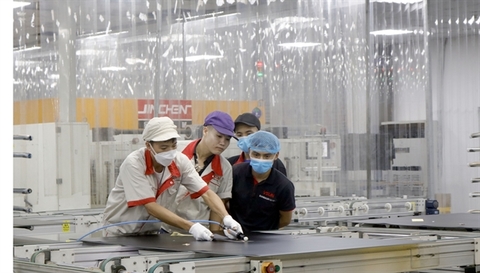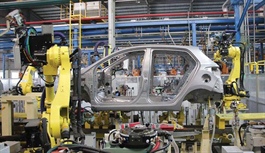60 per cent of Japanese firms plan expansion in VN, highest in Southeast Asia
60 per cent of Japanese firms plan expansion in VN, highest in Southeast Asia
About 60 per cent of Japanese firms planned to expand their operations in Viet Nam in the next 1-2 years, the highest rate in Southeast Asia.

This was a highlight of the Japan External Trade Organisation (JETRO) survey on business conditions of Japanese companies overseas in the 2022 fiscal year made public on Monday.
The survey was conducted from August 22 to September 21, 2022 when the global economy witnessed huge fluctuations, including China’s closing of borders as part of its zero-COVID policy and Europe falling into recession.
Things had been improving since then, Nakajima Takeo, Chief Representative of JETRO Hanoi said.
He said that several years ago, many Japanese firms were still in two minds about whether to invest in Viet Nam or Myanmar. However the 2022 survey found that up to 60 per cent of Japanese enterprises were willing to expand operations in Viet Nam, the highest in ASEAN, 4.7 percentage points higher than the previous survey and much higher than other countries in the region such as Thailand (40.3 per cent), Indonesia (47.8 per cent) and Myanmar (11.7 per cent).
In Myanmar, up to 30.9 per cent of Japanese enterprises planned to downsize or move their operations to other countries or territories. In comparison, according to the survey, this rate was only 1.1 per cent.
The leading advantage of Viet Nam came from the current market size as well as the growth potential. “Overall, the Vietnamese market is in good growth,” he said.
All over the Asia – Pacific region, Viet Nam came after only India and Bangladesh in the percentage of Japanese enterprises with a willingness to expand businesses.
Japanese enterprises were still hesitant about some risks of the Vietnamese business environment related to the efficiency of administrative procedures, tax system, tax procedures, the legal system, visa procedures and work permits.
According to Matsumoto Nobuyuki, Chief Representative of JETRO HCM City, Japanese enterprises were concerned about the time and cost to conduct the procedures in investment expansions as well as new investments. The lack of transparency in the administrative procedures caused an increase in costs. Besides, labour costs were increasing.
He said that Viet Nam would often be compared with Indonesia in terms of attractiveness of the business environment.
Viet Nam also faced similar risks to Indonesia or Thailand such as increasing wages and costs. “The matter for Viet Nam in the competition with other countries is not only labour cost but also labour productivity,” he stressed.
Viet Nam had not taken full advantage of the opportunity arising from the production shift away from China. Specifically, the local procurement rate in Viet Nam was 37.7 per cent, of which, procurement from Vietnamese suppliers was only 15 per cent, lower than Thailand (23 per cent) and India (36 per cent).
The restructuring of the global supply chain was taking place at a good pace but Viet Nam had not been able to fully take advantage of it because the country still failed to provide raw materials and components meeting the requirements of Japanese enterprises. “Only when Viet Nam is able to supply stable and quality raw materials and components, could the country take advantage of this opportunity,” he said, stressing the importance of promoting the development of the part-supply industry in Viet Nam.
Regarding profit, 47.6 per cent of Japanese enterprises saw improvement, 16.2 percentage points higher than 2021. More than 53.6 per cent expected improvements in profit in 2023, a high rate demonstrating future prospects, according to JETRO.
Statistics of the Ministry of Planning and Investment showed that Japan ranked third among 108 countries and territories investing in Viet Nam in 2022 with a total registered capital of more than $4.78 billion, accounting for nearly 17.3 per cent of the total foreign direct investment in Viet Nam and up 22.7 per cent over the same period last year.

















